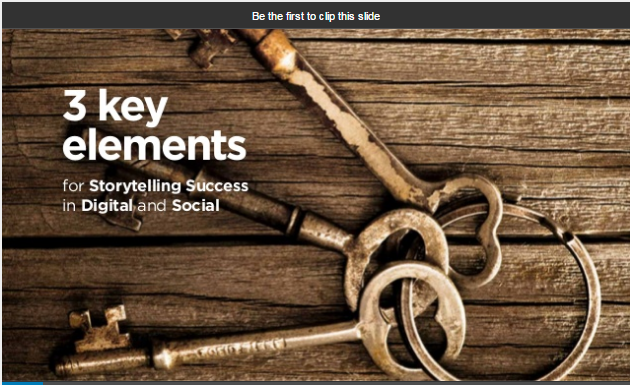
Today, with so much content available to everyone online and in social media, it’s important that your organization shares good stories that will connect with your key audiences. On Tuesday, we showed Detroit area arts and culture organizations how brand storytelling could be an integral part of their non-profit marketing strategy. Our SVP of Digital Communications, Mike McClure and Social Coop’s co-founder, Billy Strawter, presented Brand Storytelling for Digital and Social Media at Culture Source’s second workshop on storytelling. Their presentation is up on Slide Share and is embedded below.
Each key point in the presentation is followed by an example of an organization using that storytelling technique or method. We talked about the 3 key elements of storytelling that need to be considered for storytelling success in digital and social media formats. They are:
- Be authentic. With everyone carrying a super computer around in their pocket, it’s too easy to look up anything at any time. If you’re not true to who your brand is or try to tell a story that’s either counter to your brand’s values or a story that simply isn’t totally true, people will find out and it will hurt your brand.
- Be Entertaining or Informative. People spending time online want content that either entertains them or informs them about something they are seeking to know more about. Those are the “thumb stoppers” that will draw someone in who’s thumbing through their feed.
- Be Interactive. The true goal is to get people to interact with your story and share it with their own online communities. Make it easy for them to do so. Invite them to share stories that are relevant to yours. Give them easy access to your content and ways to share it.
Then, we talked about five areas to look in your organization to find good stories to share. They are:
- Your core brand attributes and values. What does your brand stand for? What are the key values you hold dear? Make a list of them and look at what stories you can craft around them. A great example we used to show this was the video Chipotle did telling the story of a farmer who had succumbed to industrial pressures to raise his pigs pumped full of hormones and packed into tiny living quarters. He decides that’s not the way to do things and goes back to farming in a more organic way. It’s a beautiful video (you can find it in the slide share) and ties into Chipotle’s value of using more naturally sourced products in making their food.
- Your history and the stories you tell. Every organization has stories that have been passed down over the years from employee to employee and to people outside the organization. This is especially true for non-profit arts and culture organizations. So, what are those stories and how can you tell them in a compelling way?
- Your product and its history. What is the story behind the actual products you sell. Each of them has their own history and stories you can tell. Again, in the arts and culture world those products could be a piece of art, a new exhibit, the latest play or performance – all rich with their own stories you can tell.
- Your employees. Everyone in your organization has their own stories. Whether it’s a performer in your latest offering, the curator, your truck driver or your janitor, everyone has a story. Find the ones that are compelling and say something good about your brand and the people behind it. One of our clients, PHI Air Medical, had an employee who took a month and a half off to do a bike ride across the west coast for charity. We shared his story and his progress through the Rocky Mountains with our social media communities. People were very engaged with these posts and a lot of positive feedback was shared with the brand.
- Your customers. Each of them has a story too. You can craft stories around who they are individually or as a group. You can get them to generate content which you then share. Why do they come to you? What drives them to be loyal to your brand and/or build a community around it? Find those stories and share them with your community.
Finally, we talked about how to distribute your brand stories in digital and social media. We looked at the different types of channels for distribution: visually driven ones, more text and visual ones and finally, the latest darling of digital and social, video channels – both pre-produced and live. Take a look at the presentation deck and start crafting your own brand stories for digital and social. If you have any questions about it, just drop me a line in the comments here or at mikem@yaffe.com. I’ll be glad to elaborate.
Mike McClure, storyteller and listener.






